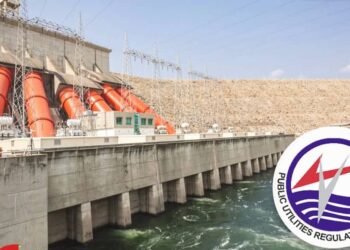First half of the year report released by the Bank of Ghana (BoG) has disclosed that Ghana’s oil industry yielded total receipts of $540 million from production in the country’s three oil fields in the first half year.
According to the data, $370.5 million was earned from production in the Sankofa, Jubilee, and TEN oil fields, while the remaining $169.5 million stemmed from corporate taxes, surface charges, and interest income on investments linked to the Ghana Petroleum Funds.
Meanwhile, the significance of corporate taxes in contributing to the receipts was evident in the first half of the year report. Corporate taxes accounted for a substantial $166 million. Additionally, surface rental charges and interest income from the Ghana Petroleum Funds contributed $3.4 million to the total receipts.
Moreover, at the close of the first half of 2023, the BoG reported a total allocation of $102 million to the Ghana Petroleum Funds. Of this allocation, $30.7 million was assigned to the Ghana Heritage Fund, while the Ghana Stabilization Fund received the remaining $71.6 million. The Ghana Petroleum Funds now boast a cumulative value of $1.09 billion at the close of the first half of 2023.
Despite the positive figures, apprehensions are emerging over the government’s ability to meet its oil revenue target of $1.4bn for 2023.
Government Might Fall Short of Its Projected Revenue Target
Mr Ben Boakye, the Executive Director of the Africa Centre for Energy Policy (ACEP), has expressed concerns that the government might fall short of its projected target of $1.4 billion for the year.
The current oil price per barrel is hovering at $74, significantly below the government’s initial projection of $88. Consequently, oil revenue for the first half of 2023 reached a modest $540 million.
As the government navigates through the challenges presented by oil price fluctuations, market participants and analysts are closely monitoring the situation. The ability to meet revenue targets and effectively manage oil receipts remains critical in ensuring fiscal stability and sustainable economic growth for Ghana.
Meanwhile, compared to same period last year, Ghana earned a total of over $731.94 million from oil production in the first half of 2022. These earnings, also came from the three fields namely, Jubilee, TEN and Sankofa Gye Nyame. it comprised of royalties, tax payments and surface rentals.
Last year, this pushed total revenue from the petroleum sector to about $8.09 billion since 2011 when petroleum production commenced in Ghana.
According to the 2022 Semi-Annual Report of the Public Interest and Accountability Committee (PIAC), the amount excluded an oil lifting that was done by a subsidiary of the Ghana National Petroleum Corporation, Jubilee Oil Holding Limited (JOHL), which acquired Anardarko last year.
Meanwhile, the country could have earned more from the sector. Following the acquisition of 7% interest in the Jubilee and TEN Fields by GNPC in 2021 (later ceded to its subsidiary – JOHL), JOHL made its first lifting of 944,164 bbls on the Jubilee Field in the first half of 2022, amounting to $100.74 million.
This amount was not paid into the Petroleum Holding Fund. Meanwhile, contrary to Section 6(e) of the Petroleum Revenue Management Act, 2011 (Act 815), Capital Gains Tax was not assessed and collected by the Ghana Revenue Authority in the sale of the 7% interest by Anadarko in the Jubilee and TEN Fields in 2021.
It can be recalled that the Ghana Petroleum Funds (GPFs) received an amount of $390.029 million for the first half of 2022, which was 91.43% higher than the budgeted allocation of $203.75 million for the GPFs for the full year in compliance with Section 4(a)(iii) of the Petroleum Revenue Management (Amendment) Act, 2015 (Act 893).
READ ALSO: Ghana Opening Can of Worms by Adding 20% Debt in 4 Months As Rising Interest Rate Saps the Country























